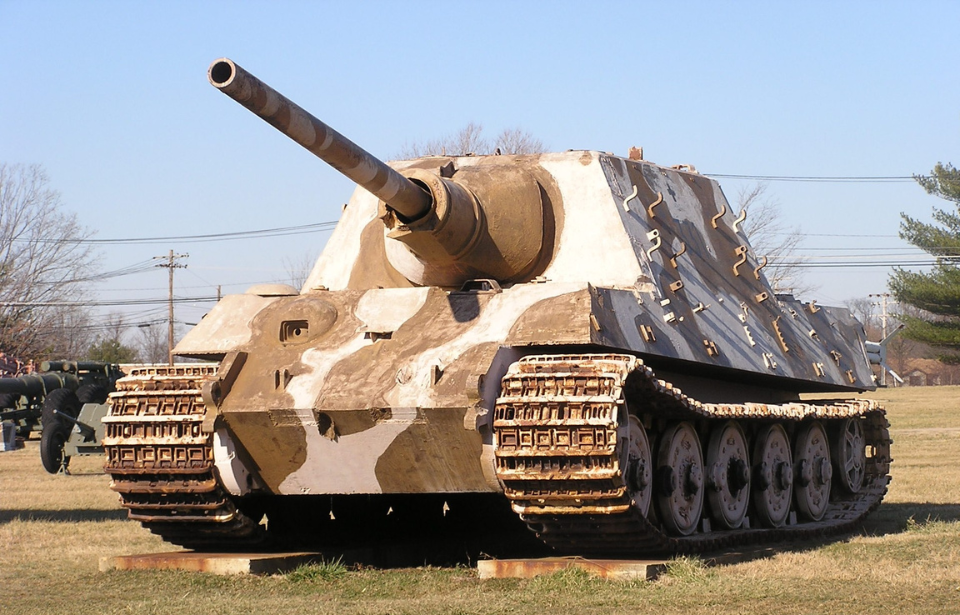Throughout the Second World War, the Wehrmacht used some of the best equipment of the era. This was largely due to the fact the German Führer wanted the country’s military to be the largest and most fearsome in the world. Among the most devastating (and issue-ridden) tank destroyers to be developed during this time was the Jagdtiger – officially known as the Panzerjäger Tiger Ausf. B – which saw service on both the Western and Eastern Fronts during the conflict.
The Jagdtiger was built upon the chassis of a Tiger II heavy tank
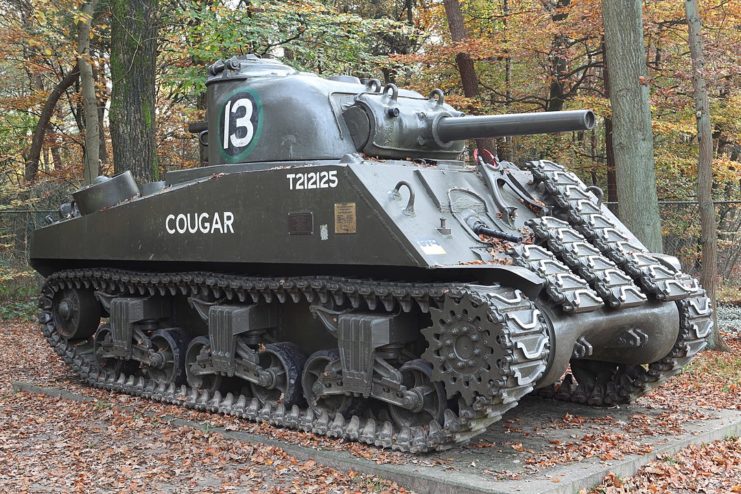
Tanks were an integral part to the war strategy of both sides during World War II. Therefore, it was important to the Germans that they be equipped with a destroyer that could defeat any the Allies used in the field. The decision was made to mount a 12.8 cm Pak 44 main gun onto a tank shell. These anti-tank weapons fired 62-pound shells, which invariably destroyed any tank they made contact with.
Weapons makers across Germany created prototypes for such a destroyer by placing wooden guns on a Panther and Tiger II chassis. It was soon determined that the Panther base wouldn’t work, and thus the Tiger II mockup was put into production as the Jagdpanzer VI, before later being renamed the Jagdtiger.
Production of the Jagdtiger was tricky
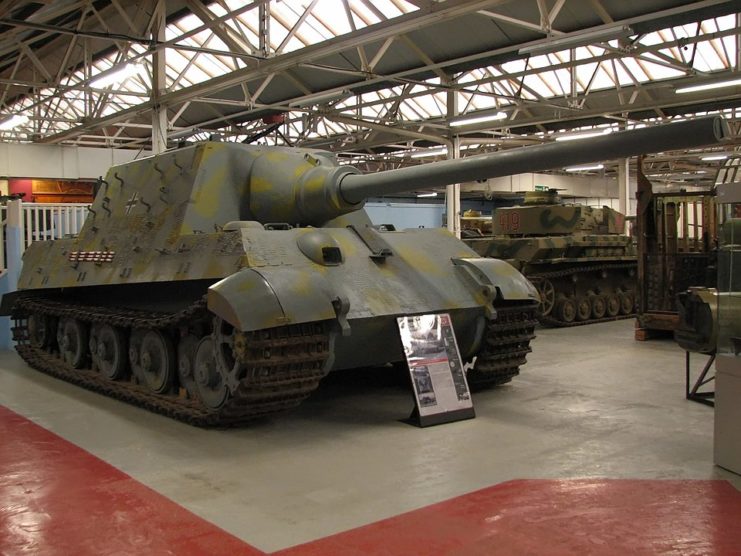
The Jagdtiger featured a box-like superstructure, and was covered in 250 mm of armor on the casemate and 150 mm on the sloped glacis plate, which extended upward across the full height of the casemate’s top. The sheer size of the tank destroyer made production somewhat difficult, and it was later dubbed the largest and heaviest tracked vehicle to be developed and operated during the Second World War.
Initially, 150 units were ordered, with production beginning in July 1944. However, by the end of the conflict, only 70-85 were manufactured. This was because the Jagdtiger was beset with near-constant issues. Its weight meant it didn’t have a powerful-enough engine to propel it forward, and many of the units wound up lost after they ran out of fuel and/or began to suffer from a variety of mechanical problems.
The tank destroyer’s issues were amplified on the battlefield
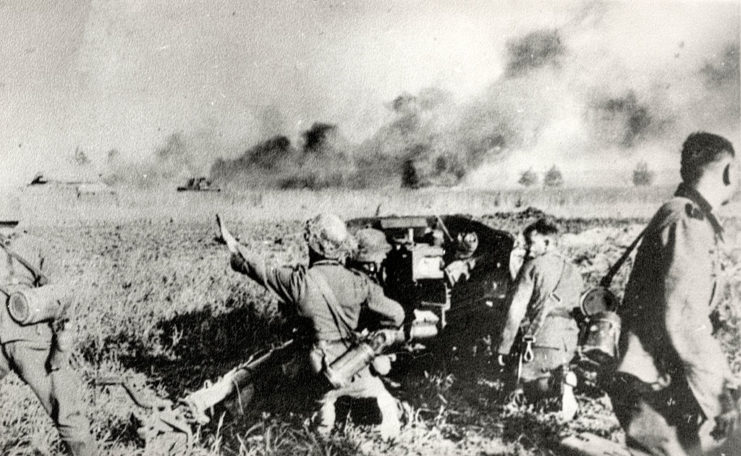
The Jadgtiger eventually hit the battlefield, despite its existing issues. This was largely because its anti-tank gun was extremely powerful and could easily take out enemy vehicles. However, despite this, the destroyer’s operators began to grow frustrated, as the gun required two-part ammunition, which meant two loaders were required. As well, it had to be locked down during maneuvers, lest its mounting-brackets quickly wear out.
An issue faced by Wehrmacht soldiers was that the Jagdtigers were difficult to position on the battlefield. The tank destroyers’ sheer size meant they could only be delivered to specific places. As such, only two heavy Panzerjäger battalions – the 512th and 653rd – were equipped with them.
The soldiers who first operated the Jagdtigers also weren’t trained properly. This, paired with the war turning against the Germans toward the middle of the 1940s, meant the units given the tank destroyers suffered from low morale.
The Jagdtiger delivered devastating blows
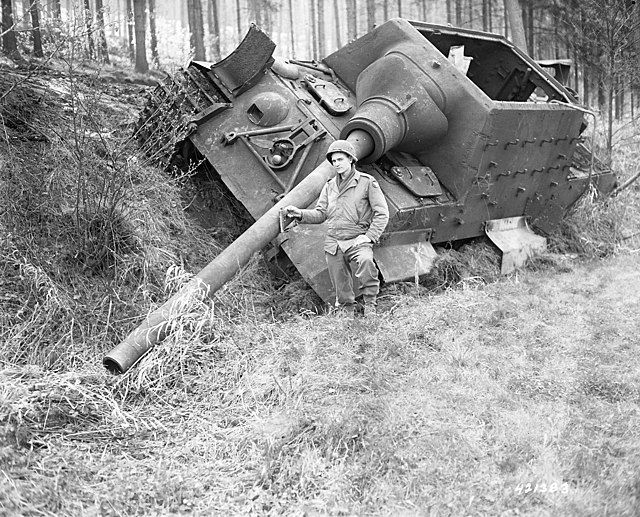
Once the Jagdtigers reached their destination and were properly used, they were devastating. Thanks to their massive guns, the tank destroyers could hit targets hundreds of meters away. Their heavy-duty armor also made them nearly impossible to destroy. That’s not to say, however, that such events never happened. During Operation Nordwind in 1945, a bazooka manned by American infantrymen took out a Jagdtiger.
The tank destroyers had some incredibly impressive feats. During one attack, just three were able to take out 25 Allied tanks, while another saw a fleet of Jagdtigers destroy 11 M4 Shermans and 30 other targets while only losing one of their own.
An enduring legacy
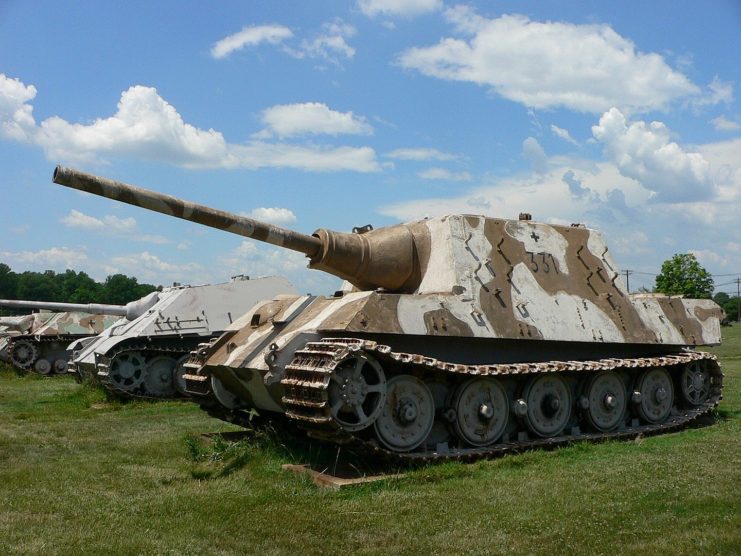
The Jagdtiger was both devastating and limited. While the tank destroyer’s gun was capable of obliterating almost any opponent, the vehicle required a much more powerful engine and other tweaks to make it effective. With the restrictions placed on Germany following the end of the Second World War, such improvements were never made.
More from us: K2 Black Panther: One of the World’s Most Expensive Tanks
Today, just three Jagdtigers are on display in museums. The one housed at The Tank Museum in Dorset, England was captured by the British while it was undergoing testing, while the one at the Kubinka Tank Museum in Moscow, Russia was taken when a German battlegroup surrendered to Red Army troops in May 1945. The final surviving Jagdtiger sits in Fort Benning, Georgia’s National Armor & Cavalry Collection and was captured by American soldiers near Neustadt an der Weinstraße.
